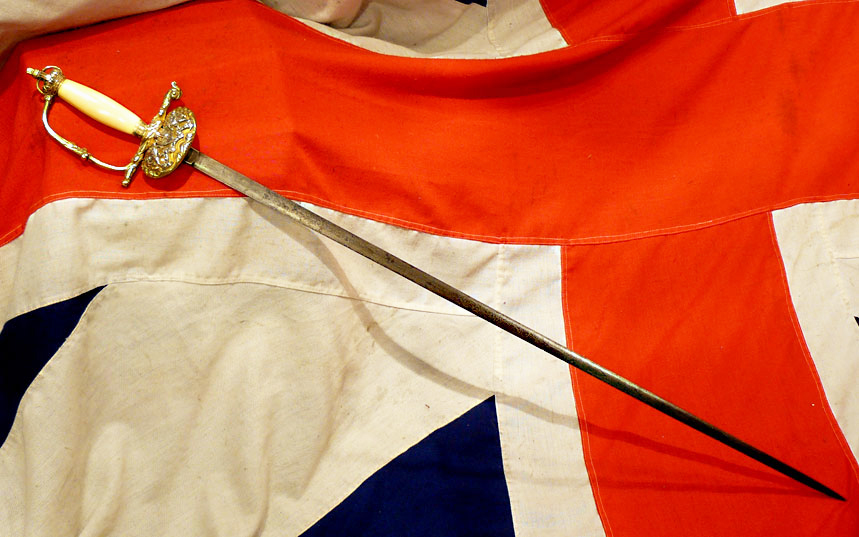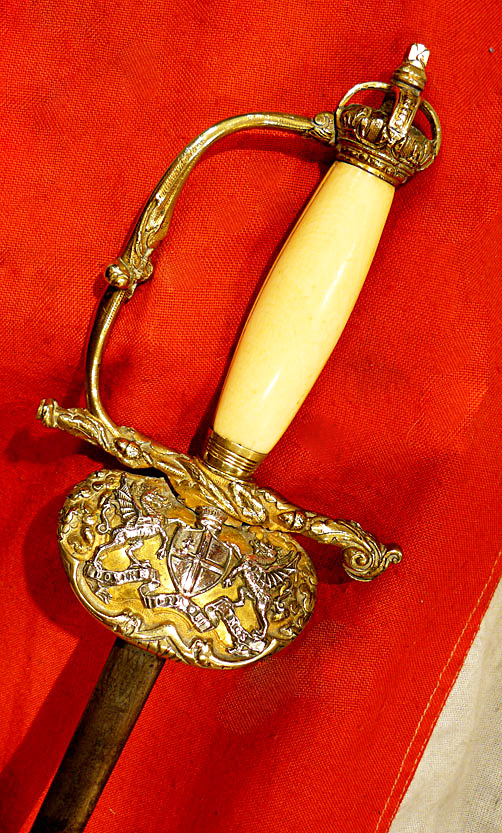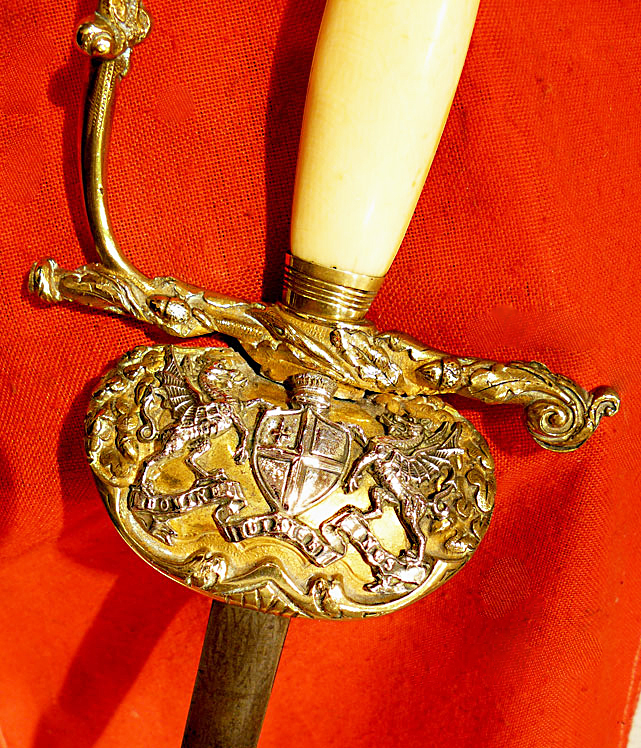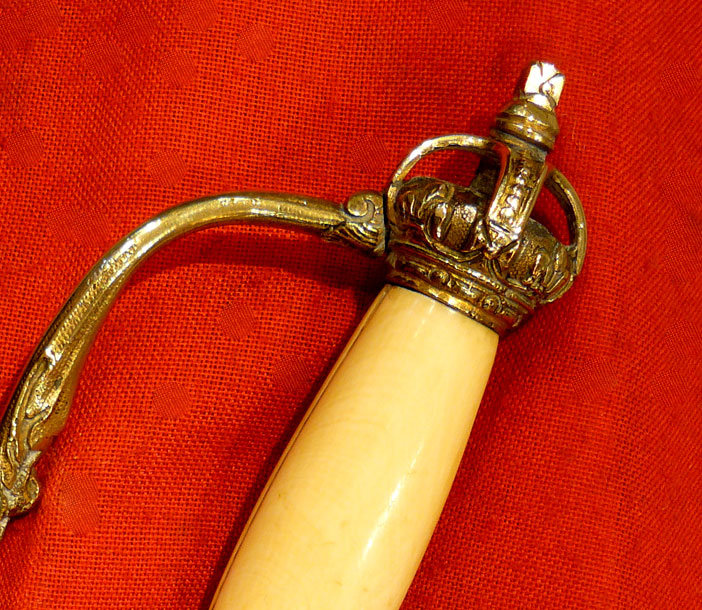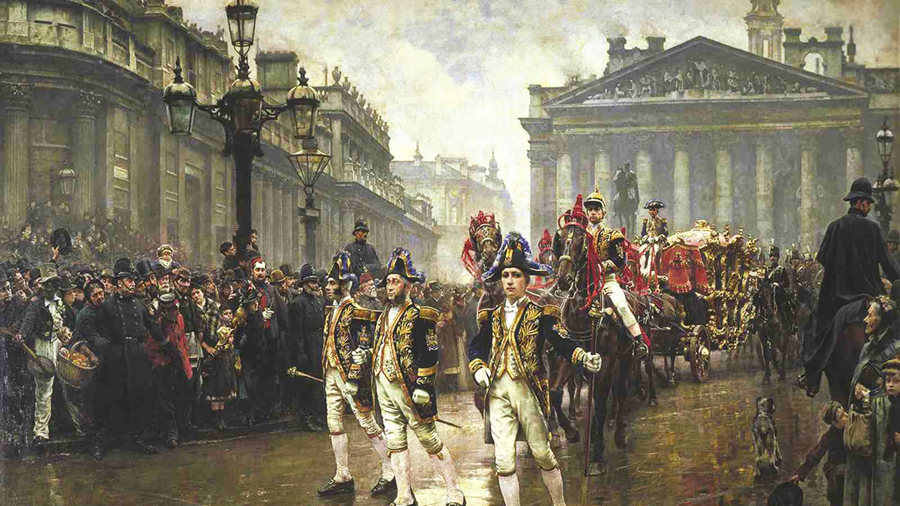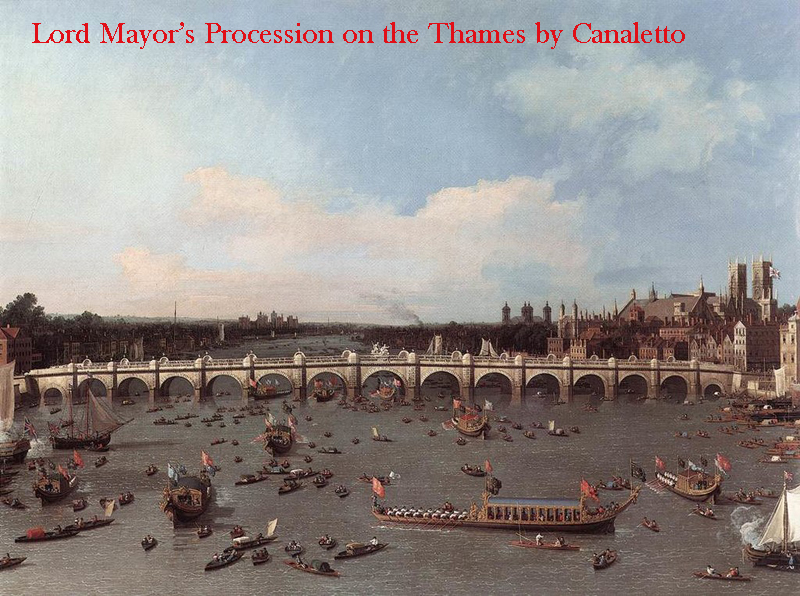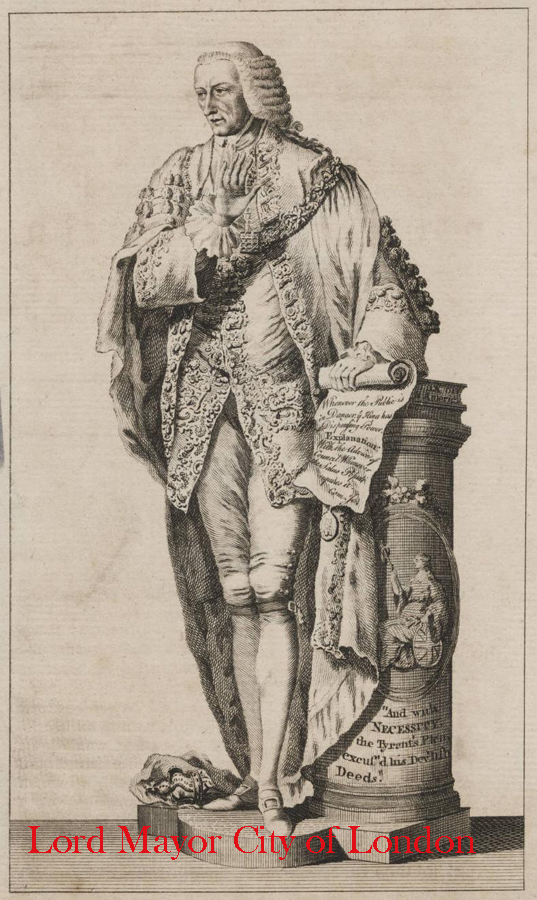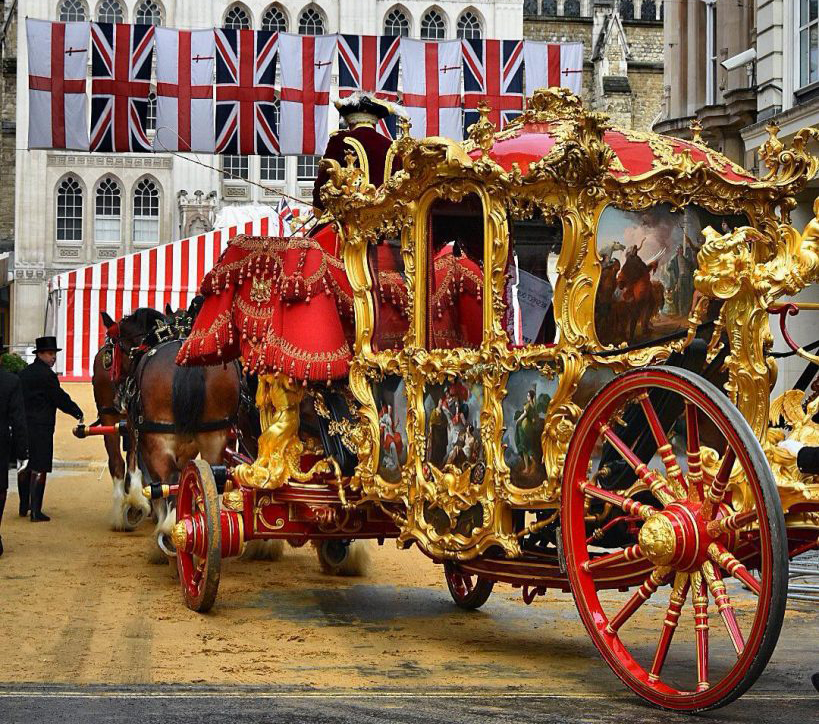A Fabulous 19th Century City of London Lord Mayor's Sword, With The City’s Crest & Crown in Silver over Gold on the Hilt.
Made by Ede and Son of Chancery Lane London, double edged blade with etching, with gilt brass and silvered hilt with cream Parkesine Ivarine grip. The first celluloid manufactured for sword grips called Parkesine Ivarine were made after 1855 from 1883 in Birmingham, England, by Alexander Parkes, then others after his death
Probably the most famous Lord Mayor in world history is the Lord Mayor of the City of London. A renown position of historical high authority that travels back almost 900 years is the Lord Mayor of London. One of whom that held the exalted office of Lord Mayor of London the world-renowned Dick Whittington.
Dick Whittington and His Cat is the English folklore surrounding the real-life Richard Whittington (c. 1354–1423), wealthy merchant and later Lord Mayor of London. The legend describes his rise from poverty-stricken childhood with the fortune he made through the sale of his cat to a rat-infested country. However, the real Whittington did not come from a poor family of common stock, and there is no compelling evidence supporting the stories about the cat, or even whether he owned one.
Another element in the legend is that Dick attempted to flee his service as a scullion one night, heading towards home (or reached Highgate Hill in later tradition), but was dissuaded by the sound of Bow bells, which promised he would be mayor of London one day.
Since the pre-Victorian era, the story has been a favourite subject of British pantomime, especially during Christmas season. It is fair to say however, that London has changed somewhat in almost 1000 years, and is certainly a much larger place than it formally was, but it remains one of the most famous cities in world history. A finest Victorian Lord Mayor's personal sword of the City of London. With a finest gilt and silver hilt, bearing the ancient crest of the City of London, and A Royal Crown pommel. The blade is fully etched, dark patinated. Maker marked from Chancery Lane. The form of sword as was worn by the former Lord Mayor of London in the 19th century. We don’t know though which particular Lord Mayor of London carried this fabulous and beautiful sword . They very rarely seen to survive today, and this is an absolute beauty. The office of Mayor was instituted in 1189, the first holder of the office being Henry Fitz-Ailwin de Londonestone. The Mayor of the City of London has been elected by the City, rather than appointed by the Sovereign, ever since a Royal Charter providing for a Mayor was issued by King John in 1215. The title "Lord Mayor" came to be used after 1354, when it was granted to Thomas Legge (then serving his second of two terms) by King Edward III. The residence of the Lord Mayor is known as Mansion House. The creation of the residence was considered after the Great Fire of London (1666), but construction did not commence until 1739. It was first occupied by a Lord Mayor in 1752, when Sir Crispin Gascoigne took up residence.
In each of the eighteen courtrooms of the Old Bailey, the centre of the judges' bench is reserved for the Lord Mayor, in his capacity of Chief Justice of the City of London. The presiding judge therefore sits to one side.
It is sometimes asserted that the Lord Mayor may exclude the monarch from the City of London. The legend is based on the misinterpretation of the ceremony observed each time the sovereign enters the City. At Temple Bar the Lord Mayor presents the City's Pearl Sword to the sovereign as a symbol of the latter's overlordship. The monarch does not, as is often purported, wait for the Lord Mayor's permission to enter the City. When the sovereign enters the city, a short ceremony usually takes place where the Lord Mayor symbolically surrenders his or her authority to the monarch by presenting the sword to them. If the sovereign is attending a service at St Paul's this ceremony would take place there rather than at the boundary of the City for matters of convenience.
The importance of the office is reflected by the composition of the Accession Council, a body which proclaims the accession of new Sovereigns. The Council includes the Lord Mayor and Aldermen of London, as well as members of the House of Lords and Privy Counsellors. At the coronation banquet which followed, the Lord Mayor of the City of London had the right to assist the Royal Butler. The same privilege is held by the Lord Mayor of Oxford; the Mayor of Winchester may assist the Royal Cook. Such privileges have not been exercised since 1821, when the last coronation banquet (celebrating the coronation of George IV) was held.
No Scabbard.
Code: 22096

